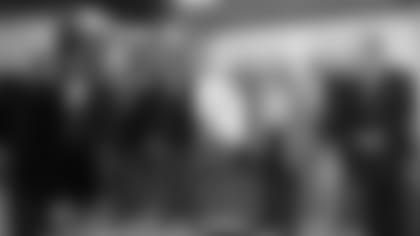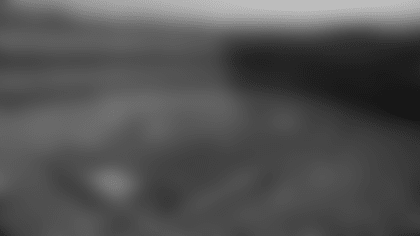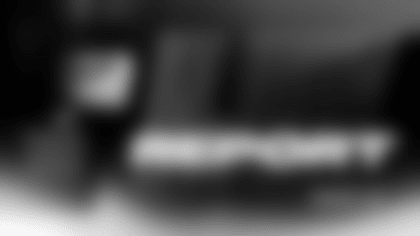Sid Hartman hits the century mark today, turning the page after one of the most bizarre weeks in the history of sport when multiple sports leagues suspended seasons, canceled events and changed procedures because of the COVID-19 virus.
The legendary Star Tribune reporter/columnist and a man who shaped the sports landscapes of the NBA and NFL through multiple ways — including his unique friendship with another icon, Bud Grant — is 100 years old and still working.
Tributes rolled in from Vikings General Manager Rick Spielman and Head Coach Mike Zimmer, former and current head and assistant coaches, star players and esteemed sportscasters who all wanted to congratulate their "close, personal friend," a term coined by Hartman.
Spielman said Hartman is "an incredible human being" and that people should aspire to be "half as good as he is" at his profession and as a human being.
“It’s been a pleasure having you around for the last six-and-a-half years,” said Zimmer, who is still a Minnesota newcomer (especially in terms of Sid years). “I’ve enjoyed the opportunity to get to know you, to watch you in the press conferences, for you to come to my office weekly and sit down and talk, especially after a game and we win, you come in the locker room, and my family is there, and we rehash the game one more time.”

Sid Hartman visits Head Coach Mike Zimmer in his new office at Twin Cities Orthopedics Performance Center in March 2018, two days before his 98th birthday.
Former Vikings head coaches Jerry Burns, Brad Childress and Leslie Frazier joined former assistants Tom Moore, Pete Carroll and Kevin Stefanski in sending congratulations and compliments.
Legends who spent all or parts of their careers in Minnesota — from inaugural Vikings Fran Tarkenton and Jim Marshall to QBs Archie Manning and Brett Favre, as well as center Matt Birk and linebacker Chad Greenway — chimed in, spanning each of the previous decades that the Vikings have played.
NBC's Al Michaels noted the start of Hartman's 11th decade and referred to him as "Sir Sid," and Michaels' broadcast teammate Michele Tafoya assured "no one will ever repeat what you've done."
"Voice of the Vikings" Paul Allen noted Hartman's unwavering loyalty:
"With the way I root for and support the local teams, I bet people for many years say, 'What are you trying to be, the next Sid Hartman?' I look at that as the greatest compliment I've ever received in my life. Happy 100th birthday to the greatest, Sid Hartman."
Vikings Owner/Vice Chairman Lenny Wilf and former Chief Operating Officer Kevin Warren, who is now the Big Ten Commissioner, also sent their regards.
All of the above have at one point or multiple times, been referred to by Hartman as his "close personal friend," but the connection with Grant might be one of the richest friendships ever formed. For that reason, we will focus primarily on their relationship.
Editor's note: The stories that follow from Hartman and Grant were told during interviews in 2017 for a Super Bowl LII game program feature. The separate interviews yielded more than the allotted space in the game program.

Vikings Owner/Vice Chairman Lenny Wilf, Head Coach Mike Zimmer, Owner/President Mark Wilf, Owner/Chairman Zygi Wilf, Sid Hartman, Hall of Fame Head Coach Bud Grant and NFL Commissioner Roger Goodell celebrated the dedication of the Sid Hartman Interview Room as part of ribbon-cutting festivities for Twin Cities Orthopedics Performance Center.
Scoops and hoops
Hartman had an initial scoop on the NFL. He was born in Minneapolis on March 15, 1920, six months and two days before a group of men met in Canton, Ohio, to lay the foundation for what would develop into the professional football league that just celebrated its 100th season.
It is somewhat fitting that one of the upstart league's earliest players — Louie Mohs of the 1922-24 Minneapolis Marines who was later circulation manager of the Minneapolis Times — wound up giving Hartman a job in circulation that was followed by a recommendation for a copy desk/reporting position to sports editor Dick Cullum. Hartman's first byline appeared in the Oct. 28, 1944, edition of the Minneapolis Times, a former sister publication of the Minneapolis Tribune. He's had more than 20,000 bylines since.
Hartman first met Grant when the star athlete was a potential recruit visiting Minnesota as a member of the basketball team at Naval Station Great Lakes coached by Weeb Eubank, who also was an assistant on Paul Brown's football staff that Grant also played for.
Hartman introduced himself and immediately asked Grant, a star in basketball, football and baseball and native of Superior, Wisconsin, where he planned to play collegiately. It's possible that the burning question may have even preceded the introduction.
"At the time, he was being recruited by Wisconsin hard," Hartman recalled. "They were willing to go all out to get him. He had a girlfriend going to Wisconsin. Everybody thought he would wind up at Wisconsin, but he was impressed with Minnesota."

A Minneapolis Lakers team photo and autographed basketball are part of a display at the Vikings Museum. Sid Hartman played a role in Grant joining the Lakers after his time at the University of Minnesota.
Grant recalled: "Sid, every recruiter would say, 'Where are you going to go to school?' I said, 'Who are you?'
I'm Sid Hartman.
"We started talking, and he was very interested," Grant continued. "I don't know why because I had never met him before.
Are you going to come to Minnesota?
"It ended up that's what happened, but he was my first Twin Cities friend, a great friend to have," Grant said.
Grant attended Minnesota on the G.I. Bill, which covered his tuition, but times were lean. His participation in three sports meant that Hartman was covering him year-round.
"I never had any money," Grant said. "Sid didn't have any money. He was just a cub reporter like you."
The men dined together on 99-cent bowls of spaghetti in Dinkytown.
“Sid became a good friend, but I was not a good source,” Grant said. “I was not a conduit to what was going on, and to this day, if you ask me what is Sid’s greatest quality, it’s his integrity.
"I can't remember one time where he said, 'What did Bernie [Bierman] say today?' Or 'What about so and so?' He never compromised our friendship for a story or inside information. I really appreciated that. But he does that to everybody. That's why he has so many friends.
"A friendship was born because I could see … here's a man with great integrity," Grant added.
When the Times folded in 1948, Charles Johnson hired Cullum and Hartman on the Tribune staff.
The previous year Hartman had helped bring professional basketball to Minnesota, delivering a $15,000 check to pay for the Detroit Gems franchise, as national writer Peter King most recently noted. The Gems were accurately renamed the Lakers and won the Basketball Association of America title in 1948-49 and the National Basketball Association title after a merger with the BAA in 1949-50.
Hartman was highly involved in Grant joining the Lakers.
"Sid, at that time, was managing the Lakers. It's not a secret anymore that that's what he did," Grant said, adding that Hartman contacted league president Maurice Podoloff to explain that he could sign a local player who could help sell tickets for a fledgling franchise.
"I'm off the G.I. Bill. I have nothing, zero, no money, so he came up with a hardship clause in the contract," Grant said. "I don't know the inner workings between he and Podoloff and [Lakers GM] Max Winter — [they said] I'm not going to make the team any better or worse, I'm just a guy.
"They said, 'Well, we will create a hardship case. The first one.' Since then, they've had other hardships," Grant said.
"There was a big headline in the Sunday Tribune when we signed him," Hartman recalled. "The guy that owned the New York Knickerbockers (Ned Irish) called a special meeting because they didn't think he was eligible to be drafted. We won the meeting, so from then on, we spent a lot of time together."
Grant suddenly had a prorated $3,000 contract for the year and an opportunity to catch up to the team with a couple of practices before a Christmas Day game at the Minneapolis Auditorium.
"I could tell I was as good as half the guys on the team," Grant said. "I was not out of place, although it was a favor, I could play at that level."
Grant however suffered food poisoning from a Christmas Eve chicken dinner at his in-laws.
"I woke up in the middle of the night. The next day, I'm going down to the arena, I'm throwing up and everything else," Grant said.
His condition prompted Lakers Head Coach John Kundla to ask if he could play for a little bit just before halftime.
"I said 'I'll do my best, but I'm not sure how long I'm going to last,'" Grant recalled. "The first time I touched the ball, we were coming up the floor, about 10 seconds left. They throw it over to me. I'm in the middle of the court. Two points. I made my first shot in the NBA from midcourt on Christmas Day with the Lakers. I don't know that it made me any better, but I felt somewhat better. Nobody was happier than Sid. He was vindicated.
"We won the World Championship that year," Grant added. "I made the winning basket against [Boston in double-overtime in 1951], so I earned my money."
International influence
The following fall, Grant returned to the gridiron, playing two seasons for the Philadelphia Eagles. He is still the only person to play in the NBA and NFL.
A better offer was presented by the CFL's Winnipeg Blue Bombers, and Grant headed north of the border to play four more seasons. He was then hired as the team's head coach in 1957.
"The people from Winnipeg got in contact with me, and I knew a couple of guys up there," Hartman recalled. "They wanted me to help get them athletes and a coach. I convinced them to hire Grant. They wanted some big-time guys, and he turned out to be a fantastic coach up there."
Grant discussed the situation with Hartman before deciding to transition from player to coach, pointing out that he was still only 29 years old and still had on-field years left.
"He said, 'Yeah, but you only get one chance to be a head coach,' " Grant said. "We discussed it, which is very important, whether you're talking about assistant coaches or your boss. … I took the job after talking with Sid about it, not that he knew anything about coaching — still doesn't know anything about coaching. He knows a lot about life."
Hartman was able, however, to help Grant with a pipeline of players, including QB Ken Ploen, who started for the Blue Bombers for each of Grant's 10 seasons in Winnipeg.
"Ploen wasn't going to play pro football," Hartman recalled. "I actually talked Ploen into playing and went up to his summer resort in Minnesota and I signed him. I was on my way back home and called Winnipeg to say that I signed him."

Bud Grant spoke at the dedication of the Sid Hartman Media Entrance when U.S. Bank Stadium opened in 2016. Grant said: "Sid Hartman will always be a part of this community, always be a part of this stadium, always be a part of pro and amateur sports in this state. If you go up to somebody and say, 'Sid,' they'd all say Hartman. As one man can love another, I love you, Sid Hartman."
Times of transition
As the 1950s drew to a close, the Lakers prepared to head to Los Angeles while Winter and other Twin Cities businessmen tried to bring professional football back for the first time since 1930.
Mohs, the early NFLer who gave Hartman the recommendation for the writing gig, became general manager of the Lakers from 1960-67, leading the team as it transitioned from Minneapolis to Los Angeles.
Minnesota was granted a football franchise by the upstart American Football League, but team organizers reversed course once offered a spot in the NFL in January 1960.
Grant was on the list to become the team's first head coach, but turned it down.
"I looked at the team and the roster and everything, [and thought] 'I can't,' " Grant said. "Not that I'm an expert at any of that, but I looked at it, and in my opinion, 'I'm going to go down there for two or three years, accumulate some players and get fired. I've got a great job in Winnipeg, had just won the national championship.'
Hartman said: "I talked to him about it, and he was loving Winnipeg and the hunting and fishing up there. I didn't think it was a good situation for him. They had an expansion team and didn't get very many good players."
Norm Van Brocklin instead became the first head coach of the Vikings on Jan. 18, 1961, three weeks after the team's first draft and eight days before the expansion draft.
After six seasons, the Vikings again reached out to hire Grant, whom General Manager Jim Finks knew from their overlap in the CFL.
"Max Winter called and said 'I'd like you to interview.' Sid was in the background of that," Grant said. "Max said, 'He turned us down once. Why would I offer him a job?' Sid said, 'Do it.' I don't know. I'm not privy to that inside conversation, but I know that was one of Sid's phrases, 'Just do it.' Jim Finks offered me the job."
Grant's return to the market as head coach of the Vikings team that Hartman was covering didn't hurt their friendship.
"I still kept my job as a newspaper man," Hartman said. "I didn't treat him better than anybody else. In fact, I scooped him. He didn't mind. He knew I had my job.
"Some of those writers were a little envious of me," Hartman added. "They thought I was getting all of the stories, and one of the writers asked him, 'What do you think of Sid Hartman as a writer?' He said, 'I tell you what, I trust him with my life.' That shut them off."
Grant began his Vikings tenure in March 1967, days after Tarkenton had been traded to the New York Giants. The Vikings brought Joe Kapp down from the CFL to play quarterback. Kapp's feistiness matched the emerging defensive dominance, helping the 1969 team win the NFL Championship and advance to Super Bowl IV.
When the Vikings celebrated the 50th anniversary of the 1969 team last fall, Gene Washington recalled taking a call from Minnesota while standing in the Michigan State athletics building in 1967.
" 'Congratulations, Gene, you've been drafted in the first round by the Minnesota Vikings,' " Washington recalled the voice on the other end saying. " 'I know that you've got to be excited because you're going to Minnesota … Bud is going to be down and be your head coach. We're so happy that Bud is coming and you're coming.'
"I said, 'Who am I talking to?' And he said, 'Sid Hartman,' " said Washington, who still lives in Minnesota.
Hartman, who had previously covered what became known as Super Bowl I, began a streak of attending every Super Bowl played from 1970 to 2001, with the exception of the games in 1990 and 1993.
Tarkenton returned to Minnesota in 1972 and led Minnesota to three Super Bowl appearances in four seasons on the way to setting multiple passer records.
Hartman, of course, had stayed connected with Tarkenton during his years with the Giants.
"Sid was always talking to Francis, 'There's a place here in Minnesota for you. You and Bud would get along fine. Keep it in the back of your mind.'
"Sid's always way ahead of most people with intuitiveness that he has," Grant said. "He's ahead of most people and is thinking not today but tomorrow or down the line."
Grant totaled 11 division titles and four Super Bowl appearances in his 18 seasons with the Vikings, and Hartman covered them all.
The morning of Super Bowl XI, where the media contingency covering the game had mushroomed to 2,000 in the Los Angeles area from 400 or so in Houston for Super Bowl VIII, Hartman quoted Grant about his desire to win one for Winter, who was the Vikings President from 1965-87.
"You never know when you'll get back here again," Grant told Hartman, perhaps sensing the end of a golden era for the Purple.
The Vikings have come close multiple times but have not been to the big one since January 1977, just two months before Hartman turned 57.

Sid Hartman presented Bud Grant for enshrinement in the Pro Football Hall of Fame on July 30, 1994.
'The biggest moment'
Seventeen years later, Hartman found himself in Canton, Ohio, where the seeds of the NFL had been planted when he was just 6 months old and the Pro Football Hall of Fame had sprouted in 1963.
Two storied careers again intersected on July 30, 1994, when Grant was enshrined after Hartman presented him.
“The biggest thing I ever did for [Grant] was introduce him at the Hall of Fame,” Hartman said. “When he told me that I was going to introduce him, I didn’t think there was any chance of that.”
Grant recently told VEN: "When I was selected and Sid called, of course he wants to know, 'Who is going to be your presenter?' I said, 'You are.' Long silence. I think he was crying. That's Sid Hartman."
Hartman sat next to Tom Landry, the former Cowboys coach who was there to present running back Tony Dorsett.
Grant, projecting what his late father would have said, exclaimed, "The kid made it!"
So did Sid.
"That was the biggest moment of his life," Hartman said. "I sat next to him in the parade, and that was the biggest moment for me, too."
By: Craig Peters






